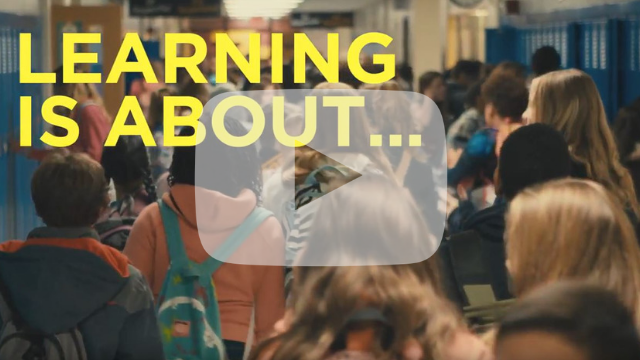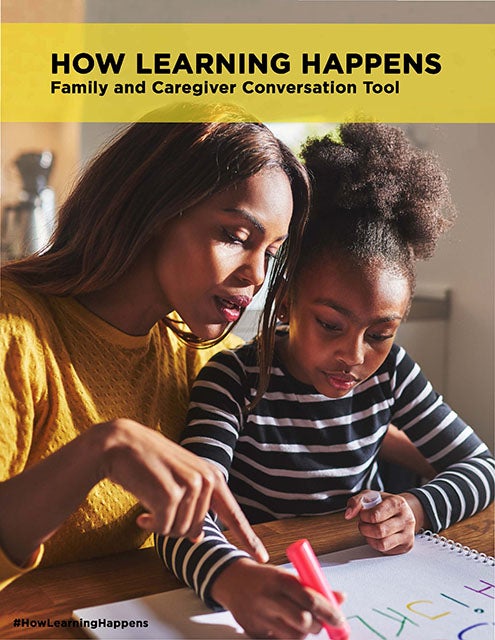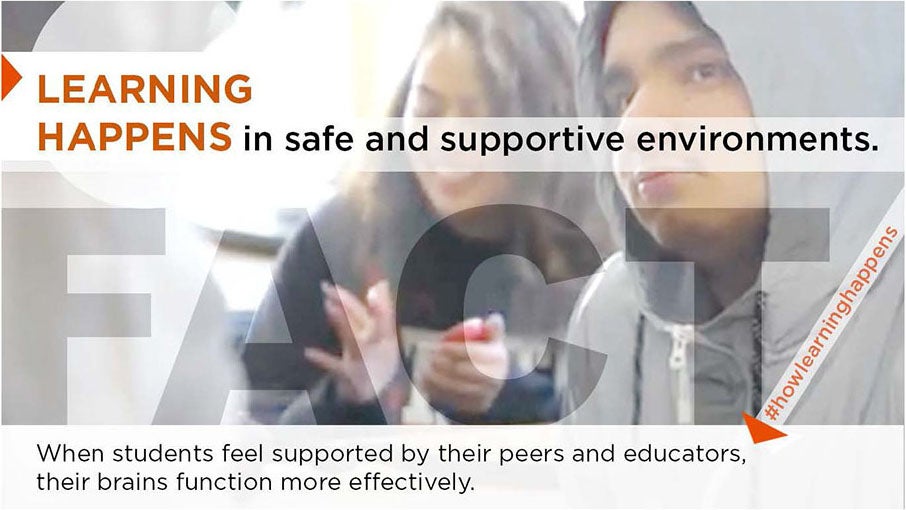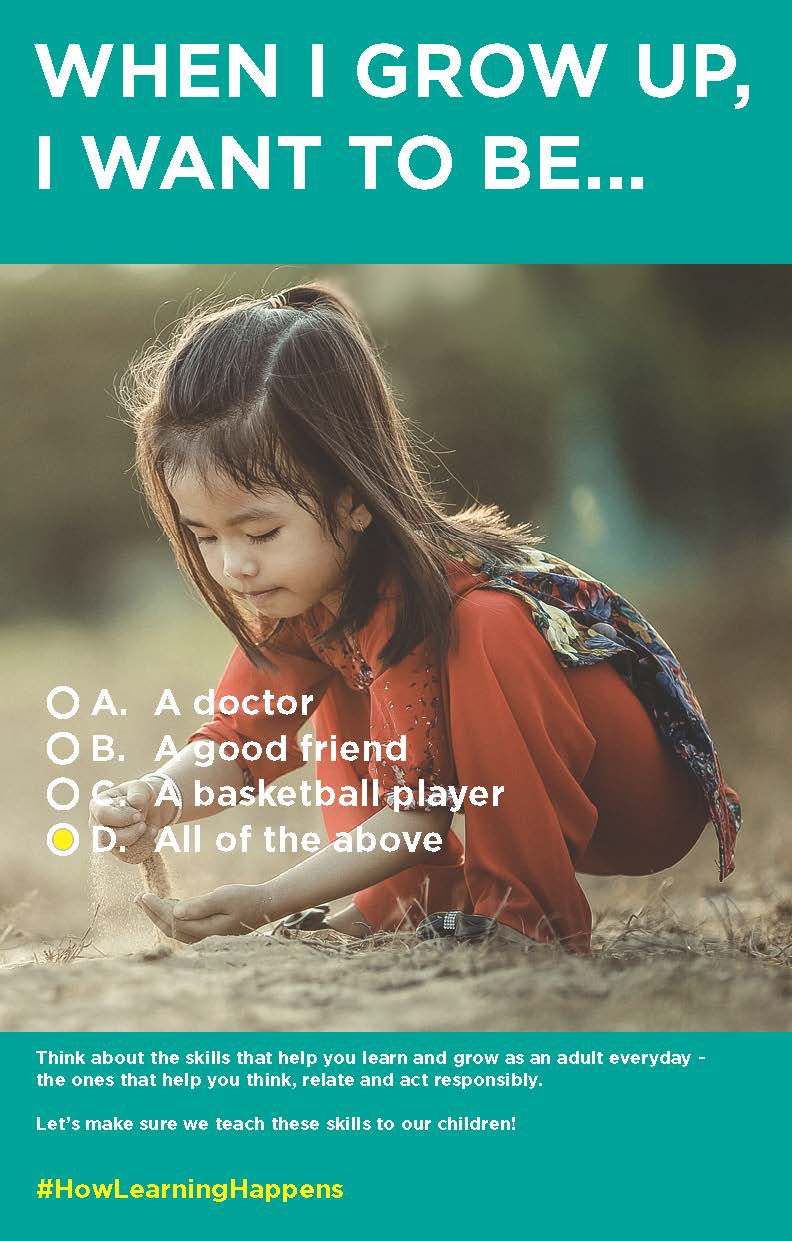How Learning Happens: Creative Assets
How Learning Happens. These three words have driven the work of the National Commission on Social, Emotional, and Academic Development and form the spine of its communication strategy. This is not an empty slogan, but a deliberate and heavily-researched strategic choice. It’s worth a brief look at the path to this way of framing the case of social, emotional, and academic development. Read more:
- Why focus on learning?
- Who is this for (and why)?
- What is the purpose of these communication tools?
- How do we envision these tools being used?
 Learning is About Video | Español
Learning is About Video | Español
 Family and Caregiver Conversation Tool
Family and Caregiver Conversation Tool
 How Learning Happens Fact Suite | Español
How Learning Happens Fact Suite | Español
 All of the Above ‘Multiple Choice’ Series | Español
All of the Above ‘Multiple Choice’ Series | Español
Why focus on learning?
“Once I hear what this is really about, it makes all kinds of obvious sense. But I’ve been so confused by the different terms and reasons for doing this…and I can’t quite picture what it looks like.”
This statement made to us by a 10th grade teacher in Indianapolis crystalizes the feedback we received from educators, parents, caregivers, researchers, policymakers, and advocates across the country about the obstacles to wider adoption of approaches that support the whole student.
There are many documented benefits of an intentional school- and community focus on the comprehensive development of young people. So many, in fact, that advocacy efforts have become overwhelmed by the range of arguments and variety of nomenclature in circulation— each of which emphasizes specific angles of focus, outcomes, or descriptors (e.g., character, grit, whole child, personalized learning, restorative justice, among others). The resulting “promotion commotion” has created confusion among parents and educators, with the unintended consequence of impeding an approach to learning that families and educators intuitively know (and research confirms) supports the success of our young people.
For this reason, we at the National Commission asked the question: What single desire unites all families and all educators when they think about what they want for their children in school every day? Survey research, interviews, and many hours of focus groups led us to this answer: No matter where you land on the political, cultural, or socio-economic spectrum, the one thing that we all want for our children when they leave home for the day is that they learn to the very best of their ability.
With this clear conviction, we set about creating communication tools that would speak to what we know about how learning happens—and what it looks like when it does. Our work was based on the wealth of scientific evidence that social, emotional, and cognitive capabilities are fundamentally intertwined during the learning process. We know that, when done well, an integrated approach to learning benefits each and every child.
And yet we also know that science and evidence alone does not persuade most people to shift their thinking, much less change their behavior. For this reason, we developed creative content that incorporates the science of learning, converting it to messages that are more intuitive, emotionally resonant, and that align with the experiences of all who work with our children every day.
Who is this for (and why)?
We decided to aim these communication tools at families, caregivers, and educators in both the school and youth development spaces because we know from experience with other education advocacy efforts that we need these critical allies to be fully on board and aligned in order to ensure the adoption and success of these strategies and practices. These tools are also intended to be shared among teachers, families, and their peers; among organizations, networks, and coalitions; and among all who engage with families and educators.
We have spent hundreds of hours developing and refining these messages—including the voice, tone, imagery and language—in consultation with families and educators in all parts of the country, in settings both rural and urban. We’ve also developed these resources in close collaboration with national and community-based organizations and groups who work directly with families and educators. Having spent 18 months to ensure that these messages resonate with families and educators, meet the communication needs of the organizations and entities that serve them, and are fully consistent with the latest findings of researchers, we are confident that these tools will be embraced and used; that they are both intuitive and inspirational.
What is the purpose of these communication tools?
The goal of these tools is to help motivate families, caregivers, and educators to support and create the conditions in which all students learn best. Toward this end, How Learning Happens offers a meta-frame that can be used by all individuals and organizations working to integrate the social, emotional, and cognitive dimensions of learning in our schools and communities. It aims to align families and educators in a way of viewing and understanding the integrated nature of how learning happens and to motivate them to pull these practices into their own communities, schools, and classrooms.
Our hope is that the use of these communication tools will generate support for the efforts of the many organizations and institutions that are working to support the whole student, including those efforts that will generate and amplify sustained action around the recommendations featured in the Commission’s forthcoming Report From the Nation.
How do we envision these tools being used?
These tools are yours. Rather than think of this as a centralized campaign with a single “call to action,” we want these tools to be used by you and your constituents and members in ways that make organic sense for the situation and circumstance. For this reason, we’ve included introductions and suggested uses for each of the tools, and have given you formats that allow for multiple purposes (e.g., posters, Instagram and twitter, ppt presentations). We’ve offered model social media copy to help you distribute them to your constituents. And finally, we have deliberately released these tools as “white label” assets, meaning that if you wish to brand them in line with your own existing communication tools and add your own website and contact information, we welcome that.